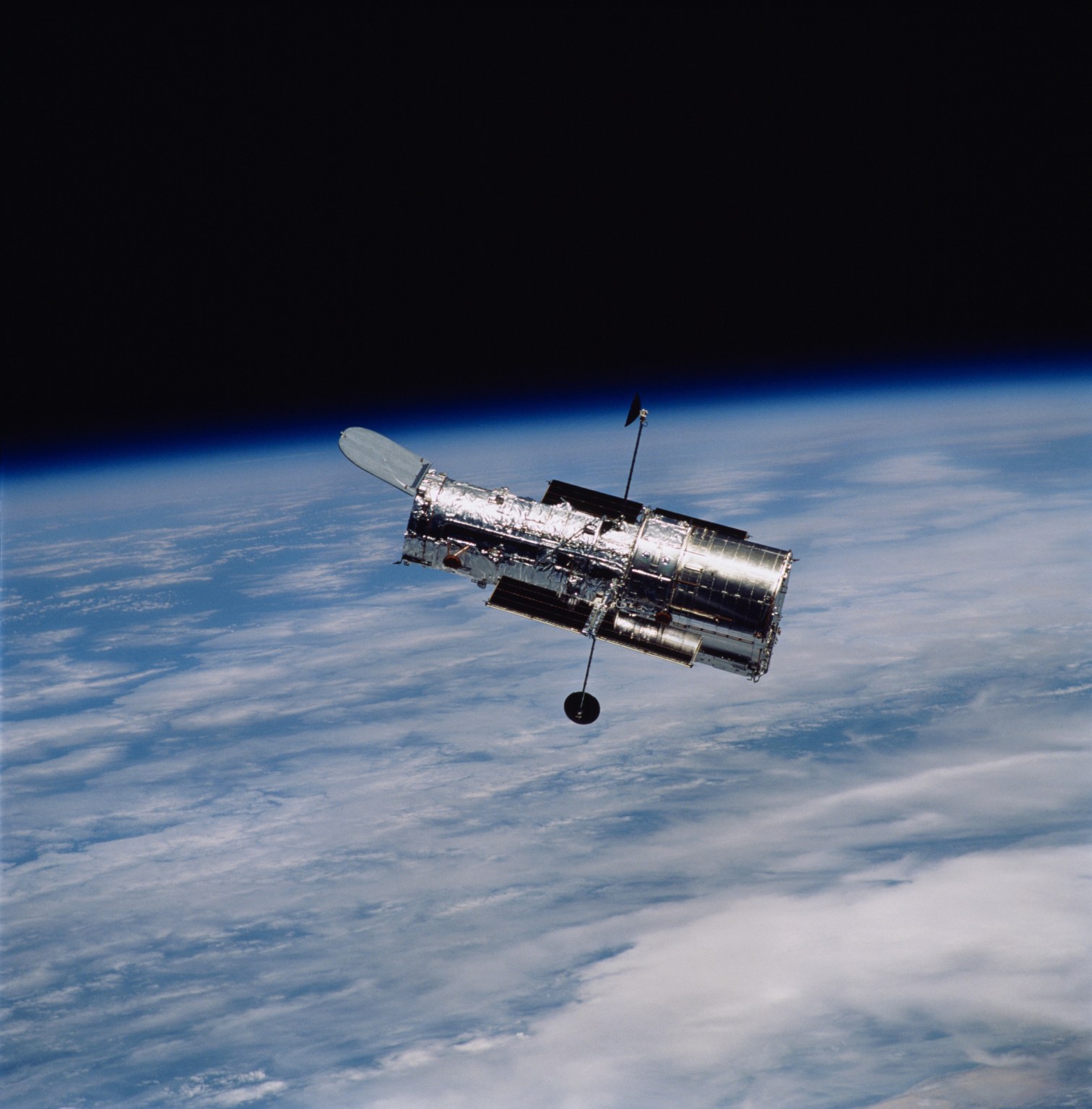1 min read
“Overhead” Projection of Large Comet Impact on Jupiter

This is a NASA's Hubble Space Telescope image of the impact sites of fragments "D" and "G" from Comet Shoemaker-Levy 9 which collided with the giant planet Jupiter. The picture has been image processed to correct for the curvature of the disk of Jupiter, so that the spot appears flat, as if the viewer were hovering directly overhead.
The large feature was created by the impact of comet fragment "G" which impacted Jupiter on July 18, 1994. The smaller feature to the left was created on July 17, by the impact of comet fragment "D".
The dark crescent, nearly 7,460 miles (12,000 km) across, was produced by material thrown high into Jupiter's stratosphere by the explosion created by the "G" impact. The material might be fine sulfur particles produced as a result of the heat of the explosion. The inner ring might be a sound wave expanding from the site of the explosion. This thin dark ring had a radius of 2,330 miles (3,750 km) across when this image was taken 90 minutes after the explosion.
The smallest features in the image are less than 200 kilometers across. This image is a color composite from three separate exposures taken with the Wide Field and Planetary Camera (filters: 9530, 550, and 4100 Angstroms).
- Object NameObject NameA name or catalog number that astronomers use to identify an astronomical object.Jupiter, Comet P/Shoemaker-Levy 9
- Release DateJuly 23, 1994
- Science ReleaseFlat Projection of Large Comet Impact on Jupiter
- CreditCredit: HST Comet Team and NASA
Share
Details
Last Updated
Aug 17, 2025
Contact
Media
Claire Andreoli
NASA’s Goddard Space Flight Center
Greenbelt, Maryland
claire.andreoli@nasa.gov






























